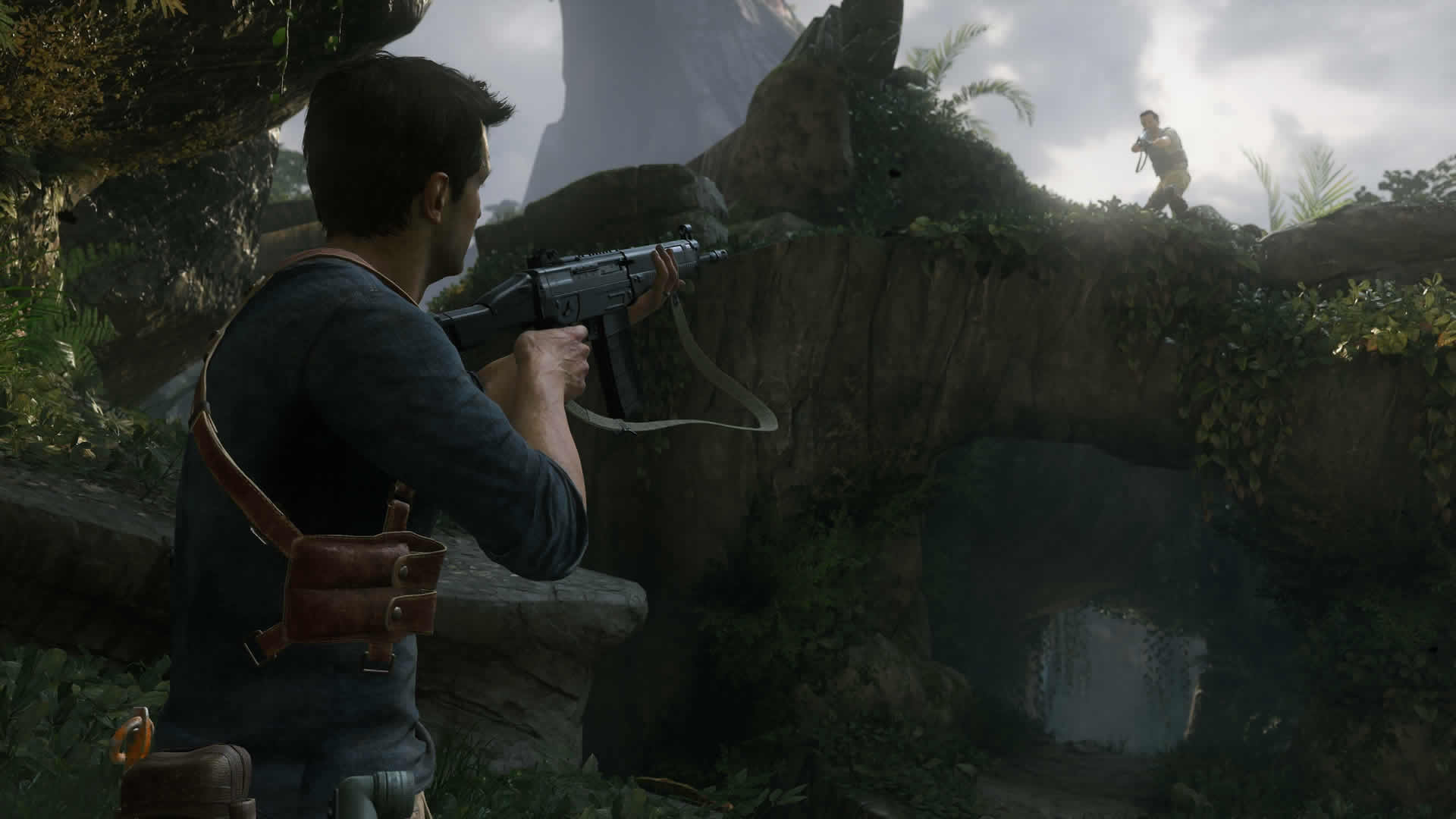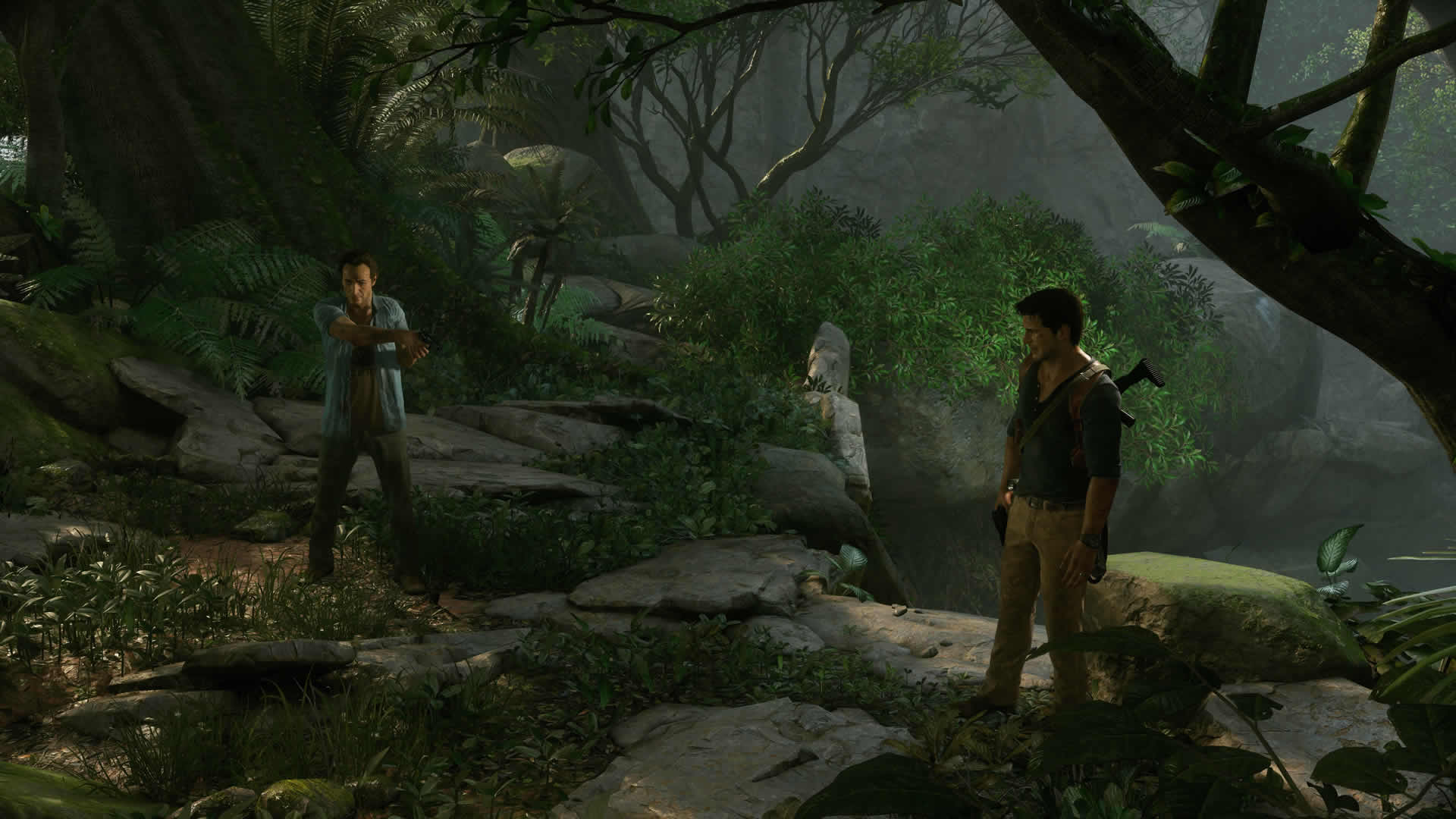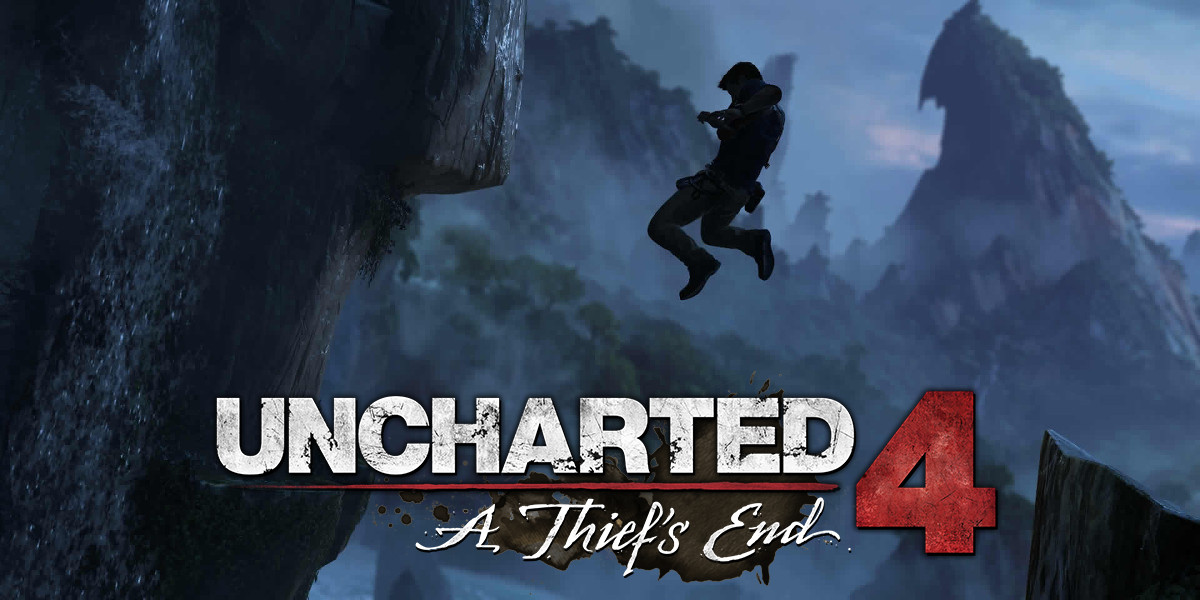Nathan Drake has been kicking around our PlayStations since 2007, blowing our minds away with outstanding visuals and storytelling. Uncharted 4 is the final game in the series, and is aptly sub-titled A Thief’s End. Let’s get our adventure on and hang around a few cliff-faces with Drake as we review this game.
Uncharted 4’s timeline is a bit schizo, since it covers a lot of stuff from the past. Feel free to skip this paragraph if you want to know as little about the game’s plot as possible. The game opens with Nathan and his brother Sam in a speedboat heading for an island. It then cuts to a chapter of Nathan’s early life in the orphanage, followed by events prior to the first Uncharted game where Nathan, Sam, and a man named Rafe are intentionally inside an Panaman prison, seeking clues to the treasure of pirate Henry Avery. The escape from the prison goes wrong, and Nathan is under the impression that Sam died in the escape. Fifteen years later, the game catches up to the present. It’s post-Uncharted 3; Nate is working as a salvage diver and lives with his wife, Elena, when Sam comes back into his life, stating that they must find Avery’s treasure within six months or Sam’s life is forfeit. The only hitch is that Rafe is still looking for the treasure after all these years, and will kill to keep it.

Naughty Dog is known for pushing the boundaries in terms of what the console can do, and I recall being blown away each time by what they accomplished with the first three Uncharted games. Uncharted 4 is no different, no less mindblowing, and no slouch when it comes to just about everything it does. The first thing to hit your face is the game’s graphical engine, which delivers such unbelievable detail and variety to the look of the game. The last time I was this impressed by character facial models and animation was when I played LA Noire. The amount of detail that has gone into the game is simply incredible, from stunning backdrops and vistas to the tiniest details on small objects to the way objects break when shot at or driven through.
The single player campaign offers a lot of what you’ve seen before in Uncharted games, with the minor additions of a grappling hook that seems to behave like Wonder Woman’s magical lasso, and the addition of driving sections. Yes, Nathan Drake finally earned his driving license. The other additional gameplay elements are more subtle, though. Enemy AI has been improved to the point where you can actually go back into hiding if you’ve killed everyone in the near vicinity. There’s also a greater emphasis on stealth and stealth kills, allowing you to remain in hiding for the duration of a battle if you’re canny. Your companions in the game have also had their AI boosted, and will actively come help you if you’re in a bind. This applies not only to battles, but interestingly to environmental puzzles, too. For instance, there’s a section early on where I was stuck trying to figure out how to manoeuvre across a particular bit of canyon. After a few minutes of me aimlessly trying this bit of wall and that, Sam went and found the bit of wall I was supposed to climb (a good few feet from where I had been attempting, I might add) and led me over. This sort of transparent assistance is the kind of thing that can take a game from “frustrating” to “brilliant”, instead of the usual other way around.

The biggest issue with the game is loading time, but not in the way that you think. If you’re playing the game for the first time, it loads just fine. The problem is when you want to go back to a previously-played level and look for relics you might have missed. Those load times can be unbearable. You can start and end a small war in the time it takes to load an older level. Pleasingly, though, there’s minimal load time between chapters and stages. Also, because the game no longer relies on pre-rendered movies to push the story, there’s no jarring jump between cut-scene loads and action, giving you an incredibly smooth experience.
In addition to the single player campaign, Uncharted 4 also has a number of multiplayer modes. Within these modes, you’re given access to a set of standard preset weapon loadouts if you just want to get straight into the action. You’re allowed to create you own custom ones if you like, and you’re given a set number of loadout points to ensure you don’t fill your loadout exclusively with the most powerful firearms. There are enough points to ensure you can fill your loadout with nice guns without feeling too hobbled. As you play and fight, you’ll find that your weapons level up; you CAN level up everything equally, I guess, but wiser players might find it a better option to find a few guns that work for them and push those ones to the limit. Levelling a weapon adds extra damage, range, ammo limits, and more, so there’s potential for an initially-weak weapon to become insanely powerful later on.

Uncharted 4 features a meagre three multiplayer modes, a severe downsizing from the more than 10 modes featured in Uncharted 3. Naughty Dog assures us that more modes are on the way, however, and that all modes, weapons, accessories, and so forth can be unlocked from within the game. In addition to the three modes—deathmatch, command (modified king-of-the-hill), and plunder (modified capture the flag)—you can also acclimatise yourself to these modes with Trials; essentially an AI version of things with very specific goals, such as reviving team-mates within a given time limit to earn cash. Ranked deathmatch is particularly interesting, because it’s no longer a case of “kill kill, get rank, go ooh”. You actually have to prove your worth here, so you’ll play initial placement matches to see how good you are before you’re given a starting rank. To move up a rank (and bear in mind that there are tiers within ranks), you’ll need to prove yourself once again in qualifier matches to see whether you’re moving up or not. It feels a lot like it’s catering toward the eSports crowd, which I guess is a fair assessment. Who doesn’t want to be on Twitch these days, right?
Overall, while the multiplayer mode is competent, there’s precious little of it in Uncharted 4. Since this review is happening post-release, we can happily report that lobbies are full, the multiplayer games are busy, and you’ll have little problem finding a match. Getting into a match was quick, painless, and once it had loaded, chuffed along with little to no lag. What’s interesting is that while multiplayer goes along at a nice 60fps, single player comes in at 30fps, most likely due to the added graphical detail.
Uncharted 4 has almost nothing wrong with it, and comes close to being a perfect game. The story is just about perfect, the characters are engaging, the graphics are purest eye-candy with rainbows and sprinkles, and even the combat is less tedious than before. While the loading times can be a bit pants, they’re tolerable. Uncharted 4: A Thief’s End will probably give you one of the most satisfying plays you’ve done in a long time.



